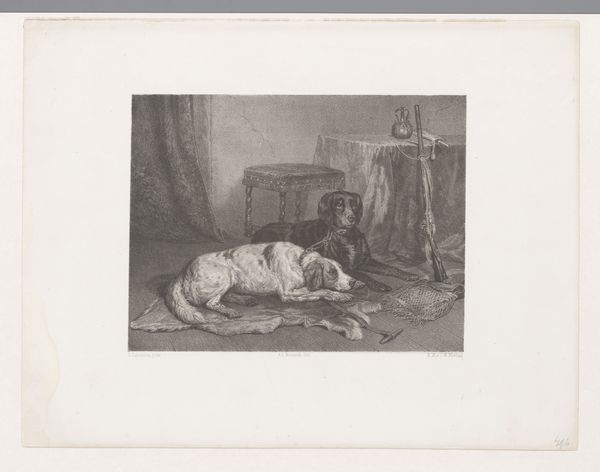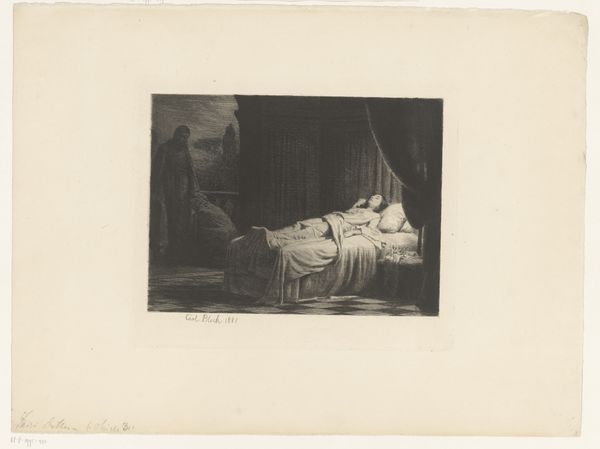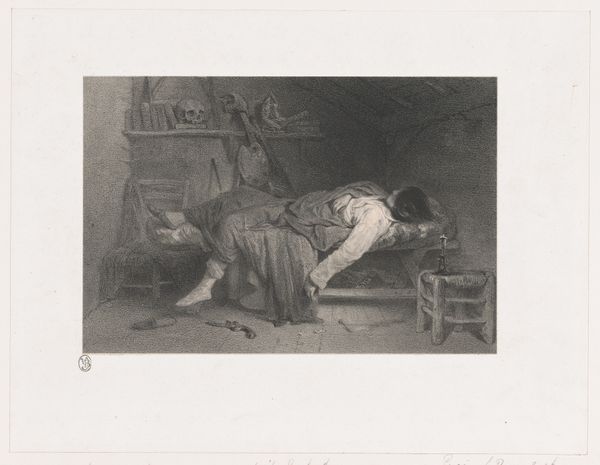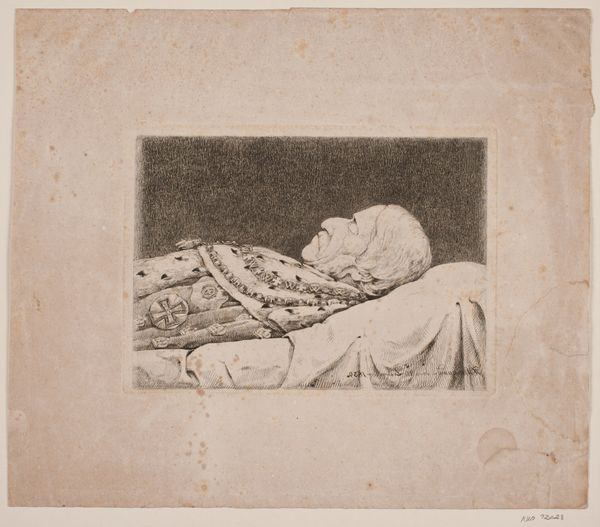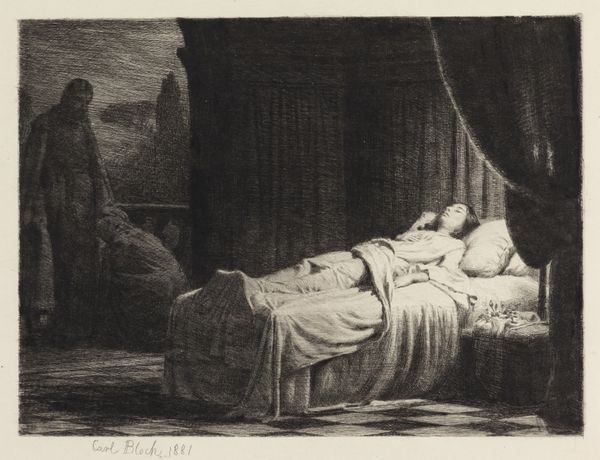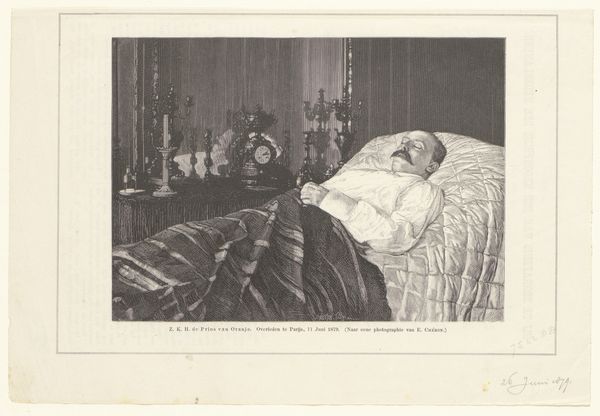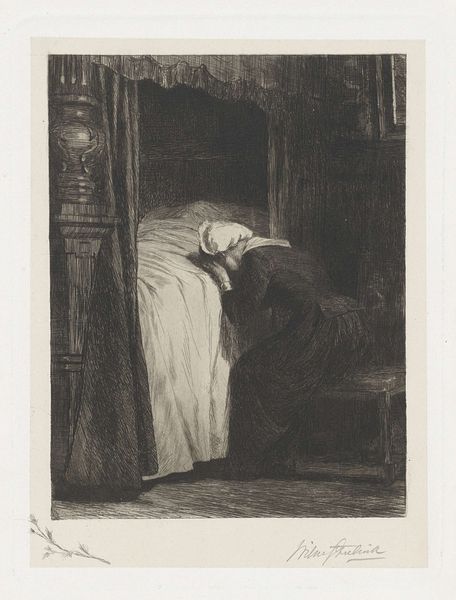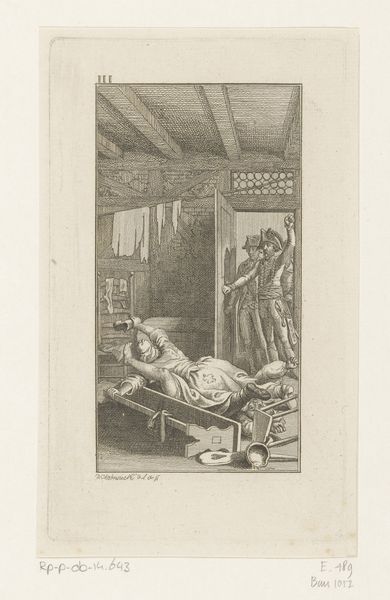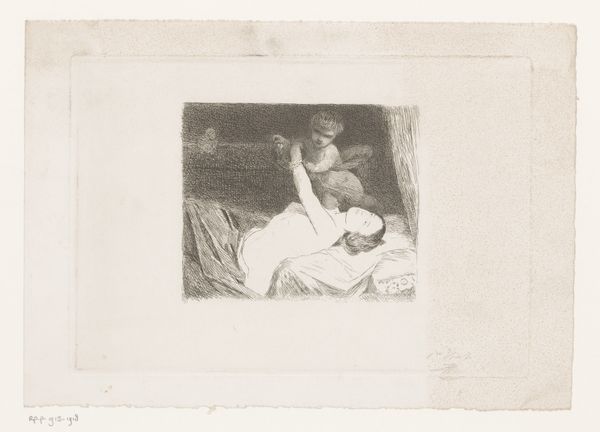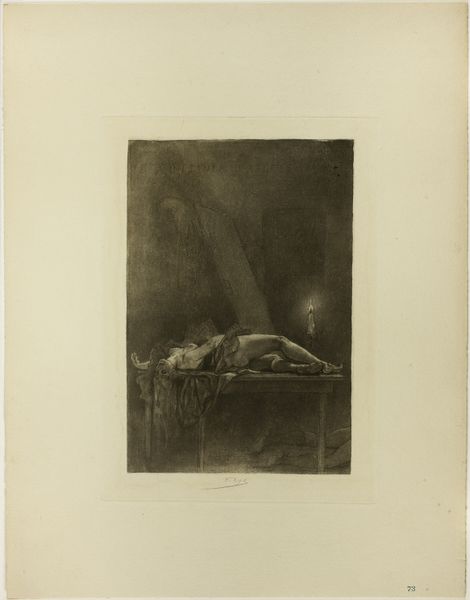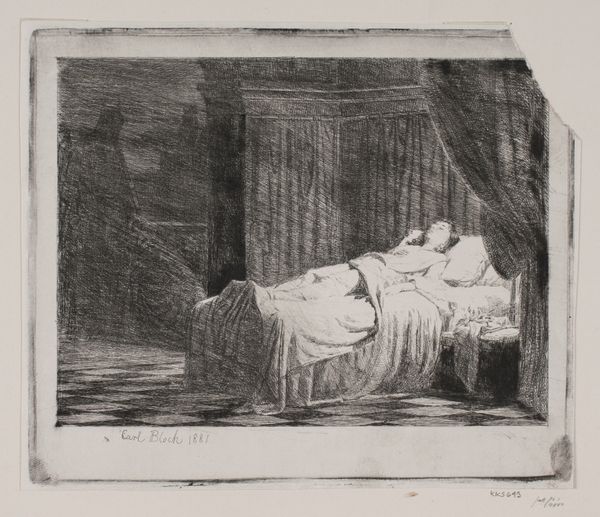
Dimensions: height 374 mm, width 530 mm
Copyright: Rijks Museum: Open Domain
Curator: Well, this is rather somber. It gives me the feeling of being inside someone's private grief. Editor: Yes, this etching, "Jonge vrouw op haar sterfbed" or "Young Woman on Her Deathbed", by Eleuterio Pagliano, created sometime after 1861, is a powerful study in grief and the depiction of mortality. Notice how Pagliano used the etching technique to render fine detail in this genre and history painting. Curator: It's the texture that first strikes me – the way the lines create the folds in the bedding, the heavy fabric. You can almost feel the weight of it all, both literally and figuratively. But it's only an etching, after all, not the real thing! It does raise questions about art's relationship to lived experience and representation in reproductions. Editor: Precisely! And think about how prints and etchings like this circulated imagery, influencing how people visualized death, grief, and social norms. Deathbed scenes became popular within certain socio-economic groups. Curator: I can see that, yes. The single candle burning beside the bed emphasizes the passing of time. We see the artist employing these well-established compositional tools to construct a sentimental narrative. What about the consumption habits around such imagery and who had access to this kind of artwork? Editor: Absolutely, that’s crucial. Think about the role of the market. Pagliano had to sell these works, right? And in displaying the figure, he simultaneously plays into a morbid fascination while perhaps eliciting a sense of empathy from his buying audience. It all reinforces the era’s societal understanding about family relationships. Curator: The social impact is undeniable, given how readily an etching could circulate. It's a much different viewing experience than a unique, monumental painting in some ways. A shared and reproducible format democratizes viewership, to a certain extent. Editor: Indeed. This etching not only depicts a moment of personal grief, but serves as a looking glass reflecting how a specific society grappled with and commodified death and grief through reproducible artwork. Curator: A fitting piece, then, to end our discussion and remind us that art extends into our own experiences, in terms of production, reception, and enduring materiality. Editor: An excellent point. By understanding that broader context, we can then understand the artist's decisions a bit better.
Comments
No comments
Be the first to comment and join the conversation on the ultimate creative platform.
